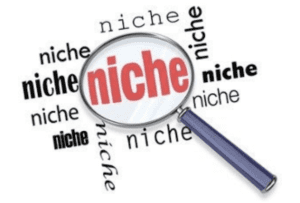
As a business owner, you’ve likely encountered calls and emails from firms claiming to have buyers ready to purchase your business or introducing you to potential strategic relationships. Private Equity Groups (PE), as well, may be reaching out, touting their ability to offer a differentiated buying experience. It’s flattering, and sometimes, the attention feels great.
But don’t let the preemptive offer catch you off guard. In fact, it could cost you money.


Beware of the Preemptive Offer: Why Competition Matters in Selling Your Business
While many entrepreneurs are enticed by the idea of a quick sale without competition, this is a classic mistake. The real value in selling your business comes when you’ve created a competitive environment that drives up the price and ensures you’re making the best deal possible. It’s all about embracing the auction mindset.
The Problem with Preemptive Offers
It might feel tempting to accept a preemptive offer—especially when it comes from a company that seems genuinely interested in your business. However, these unsolicited offers are often made with the intention of securing a sale without competition, which can leave you leaving money on the table.
Sure, the offer may seem attractive, but how can you be sure it’s the best possible deal without considering all your options? This is why creating a competitive auction environment is essential for maximizing your sale price and protecting your interests.

Early Lessons from My First Business
Let me explain how I first encountered the preemptive offer—and why it’s crucial to create competition when selling your company. Shortly after college, I launched a mail-order distribution company called SBR Sports (Swim Bike Run Sports). It was born from my passion for triathlons, which was expensive, but I quickly realized the potential to make money by catering to fellow triathletes with discretionary income.
In the mid-80s, the triathlon market was growing, and we created a niche brand that was catching attention. However, the traditional cycling industry was late to recognize the rise of triathlon as a serious sport. They were cycling purists who initially dismissed triathletes, but as our market grew, they saw an opportunity to buy into a market they had neglected.
I received my first unsolicited offer from a competitor—Strategic #2. They made a strong pitch, flattering us on our growing brand presence and positioning within the market. However, something about the offer felt too good to be true.
Turning the Tables: The Auction Mindset
Instead of jumping at the preemptive offer, I reached out to Strategic #1, a competitor who had been watching our growth but hadn’t approached us yet. After evaluating the initial offer, we realized that Strategic #1 was willing to offer significantly more—2.4 times the initial preemptive offer, and after a little negotiation, the price climbed to 2.7 times.
This wasn’t a “dot-com” exit, but for two 25-year-olds, it was a fantastic outcome. The lesson here? Competition creates value. By leveraging a competitive auction mindset, I forced the market to show me its true value, and it paid off.
Why the Auction Mindset is Key in Business Sales
The core takeaway from my experience is that competition increases the value of your business. Instead of being swept up in the rush of a preemptive offer, you should actively seek multiple buyers and create an environment where they compete for your company. Here’s why:
- Market Clarity: When multiple buyers are involved, they’ll each bring their own set of strengths and weaknesses to the table. This helps you identify the best fit for your business, whether you’re looking for cash upfront, long-term strategic partnership, or other deal structures.
- Driving Value Up: Having more than one party interested in your business naturally increases its perceived value. Buyers will often offer higher amounts when they know they’re not the only option.
- Keeping Negotiations Honest: With multiple buyers, the negotiation process is more transparent. It keeps the buyers honest and prevents any one buyer from undervaluing your business or imposing unreasonable terms.
- More Control: The auction mindset gives you more control over the sale process. You can dictate the terms of the deal, such as the structure (cash, rolled equity, earn-outs, or seller notes), which allows you to align the deal with your financial and personal goals.
Preemptive Offers: When Should You Consider Them?
While competition is crucial, there may be rare circumstances when accepting a preemptive offer makes sense. For example:
- If the buyer is offering premium value and is a clear fit for your business.
- If you are in a time-sensitive situation and need liquidity quickly.
- If you want to minimize risk and ensure a smooth transition with a buyer you trust.
However, these situations should be the exception, not the rule. In most cases, creating a competitive landscape is the best way to maximize the value and terms of the deal.
Conclusion: Don’t Settle for Less Than Your Business Is Worth
The lesson I learned from my first exit is clear: Never settle for a preemptive offer without testing the market and seeking multiple buyers. By creating competition, you can ensure that you’re getting the best possible deal. The auction mindset isn’t just a tactic—it’s a strategy that ensures your business is sold for the price it deserves.
If you’re considering selling your company, let us help you cultivate the auction mindset and navigate the M&A process with confidence. Don’t let an unsolicited offer dictate your exit strategy. Get the best price, the best terms, and the best deal for your business.
Talk to the Experts at Merit Investment Bank
J. Craig Dickens
Chairman
Craig.Dickens@MeritInvestmentBank.com
253-370-8893
Securities offered through Finalis Securities LLC Member FINRA/SIPC. Merit Investment Bank and Finalis Securities LLC are separate, unaffiliated entities.

0 Comments